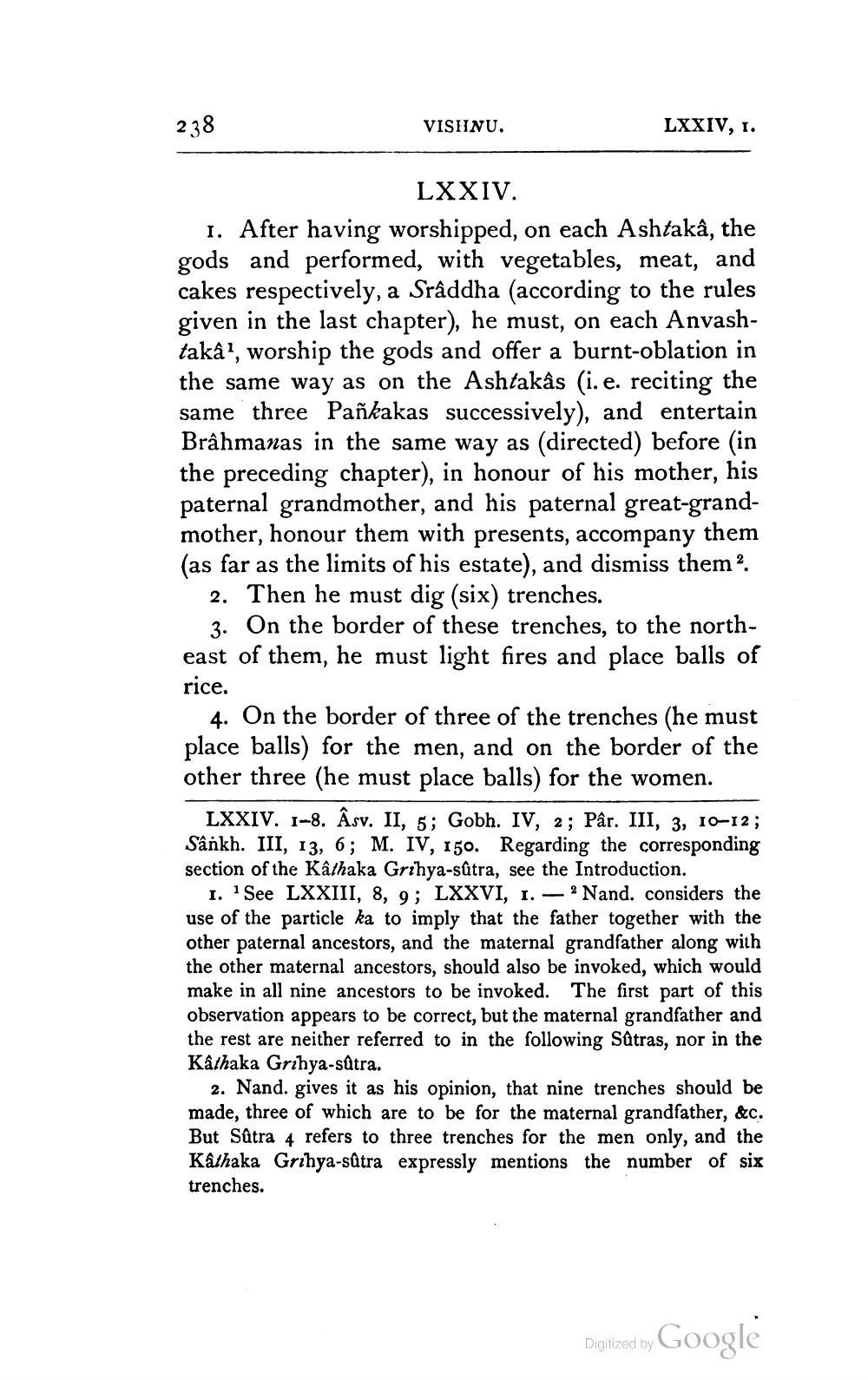________________
238
VISHNU.
LXXIV, 1.
LXXIV. 1. After having worshipped, on each Ashtakâ, the gods and performed, with vegetables, meat, and cakes respectively, a Sraddha (according to the rules given in the last chapter), he must, on each Anvashtakâ?, worship the gods and offer a burnt-oblation in the same way as on the Ashtakâs (i.e. reciting the same three Pañkakas successively), and entertain Brâhmanas in the same way as (directed) before (in the preceding chapter), in honour of his mother, his paternal grandmother, and his paternal great-grandmother, honour them with presents, accompany them (as far as the limits of his estate), and dismiss them?
2. Then he must dig (six) trenches.
3. On the border of these trenches, to the northeast of them, he must light fires and place balls of rice.
4. On the border of three of the trenches (he must place balls) for the men, and on the border of the other three (he must place balls) for the women.
LXXIV. 1-8. Âsv. II, 5; Gobh. IV, 2; Pâr. III, 3, 10-12; Sânkh. III, 13, 6; M. IV, 150. Regarding the corresponding section of the Kathaka Grihya-sútra, see the Introduction.
1. See LXXIII, 8, 9; LXXVI, 1. — 2 Nand. considers the use of the particle ka to imply that the father together with the other paternal ancestors, and the maternal grandfather along with the other maternal ancestors, should also be invoked, which would make in all nine ancestors to be invoked. The first part of this observation appears to be correct, but the maternal grandfather and the rest are neither referred to in the following Satras, nor in the Kathaka Grihya-sâtra.
2. Nand. gives it as his opinion, that nine trenches should be made, three of which are to be for the maternal grandfather, &c. But Sätra 4 refers to three trenches for the men only, and the Kathaka Grihya-sútra expressly mentions the number of six trenches.
Digitized by Google




